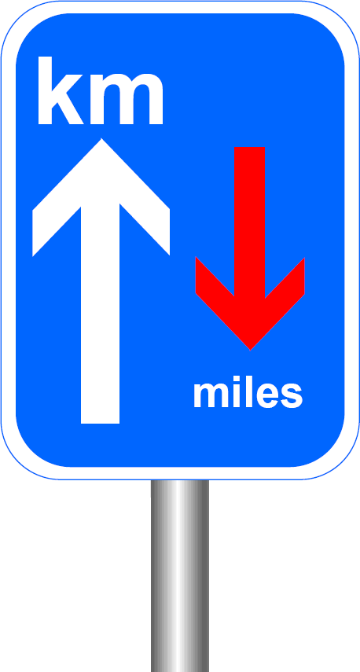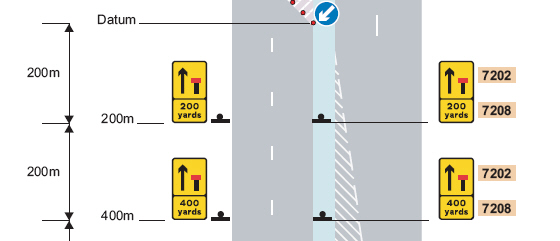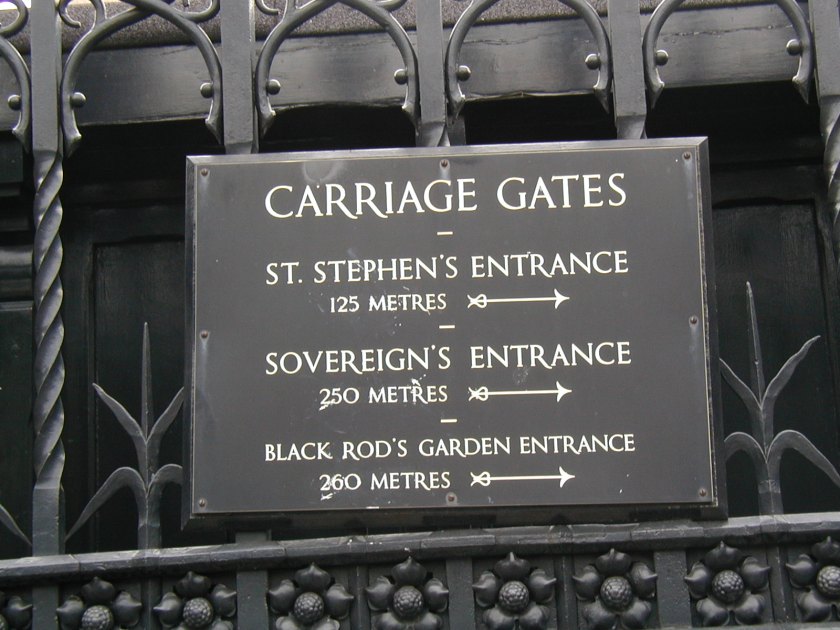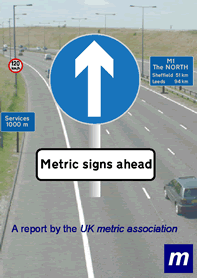
Road transport in the UK is the most visible example of Britain’s muddled approach to measurement and is the area where out-dated imperial units persist most.
Here are some examples of this muddle:
| Imperial | Metric |
| Road design and construction | |
| Height and width restrictions (in feet and inches) | Height and width restrictions (in metres) |
| Highway Code (Rule 163) : Overtaking space (in metres) |
|
| Weight restrictions in tonnes | |
| Car dashboard instrument panels (mandatory mph) | Mandatory km/h |
| Tachographs in km and km/h | |
| Commercial maps and atlases | Ordnance survey maps |
| In-cab vehicle height indications | Car manuals |
| Motorway emergency markers | |
| Car ferry operators’ tariffs | |
| Regulations on CO2 emissions (g/km) | |
| Petrol sales (in litres) | |
| Official fuel consumption figures (miles per gallon) | Official figures fuel consumption (L/100 km) |
When Britain announced its intention to adopt the metric system in 1965, it was originally planned that road conversion would take place in 1973. However, following the change of government in 1970, the conversion programme was put on indefinite hold and has never been re-instated. Indeed successive British governments have sought to slow down further progress by negotiating opt-outs with the European Union from using metric units on road signage.
UKMA contends that the adoption of metric road signage would bring overwhelming benefits for the nation’s general measurement system and would have very significant advantages for road users, designers and builders. Moreover there are no plausible objections on grounds of practicality, cost or safety. Other countries as varied as Australia, Canada, Kenya, India and the Republic of Ireland have changed their roads from imperial to metric without compromising safety and at reasonable cost.
Today’s mess
While British industry and education adopted the metric system decades ago, successive governments have consistently failed to make progress with road signage and speed limits. Thus we have a mess of two systems with awkward imperial units predominant.
So while motor manufacturers specify vehicle dimensions in metric, new restriction signs must show both imperial and metric (old imperial-only signs can remain in place until they are replaced).
Similarly while specifications for designing and positioning road signs are metric, contractors must mark distances for motorists in imperial. For example Chapter 8 of the Traffic Signs Manual requires contractors to place signs warning of a lane closure at multiples of 200 metres but to indicate the distances as multiples of 200 yards on the signs themselves (see Section D3.42.11 and Plans TS1 to TS4).

Since yards and metres are treated as equivalent, it is irrational that the Department for Transport claims that motorists might be confused if signs showed metres!
Metric distances (both in metres and kilometres) are not authorised on British traffic signs.
As a result, international travel, calculation of fuel consumption and navigating when hiking – all are unnecessarily complicated.
So is it illegal to put up metric signs?
The answer to this depends on the circumstances. Speed limits are required to be in mph on roads but UKMA believes that signs indicating distances in metres or kilometres may be legally erected with the right form of consent. Private sector bodies often do this.
We explain this in two parts, an overview of the legal position and a more detailed discussion making full reference to relevant documents.
However, UKMA does not consider these limited half hearted concessions as any substitute for the proper full scale metrication of distance signs and speed restrictions throughout the British road network.
Final irony
Despite decades of governments hindering metrication of Britain’s official traffic signs and speed limits, it is ironic that the Palace of Westminster provides information to visitors using informal metric signs. The sign below does not comply with the Traffic Signs Regulations and General Directions 2016!

Read UKMA’s report ‘Metric Signs Ahead’
For a more complete analysis of Britain’s road signage situation and how to fix it, read UKMA’s report ‘Metric Signs Ahead’, with a Foreword by Lord (Neil) Kinnock. The report is printed as a 68 page paperback in full colour. The report draws attention to Britain’s confused approach to road measurements and speed limits. The report explains why it is important to complete the conversion to metric and how this can be achieved through a cost-effective programme.
The report (ISBN 0750310146) is currently out of print. For more information on the report and how to obtain a free online download click here.

